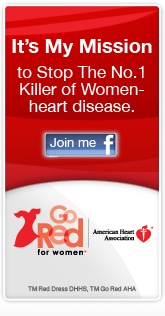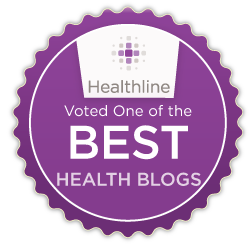I can’t begin to imagine what it is like to be a person close to me. I don’t know what it’s like to watch someone you love or care about have a heart attack, and I hope I never do. There’s something about being the person who’s in crisis, the subject of the drama, that feels, well, kinda normal. Even in the ER, the ICU, in rehab — all along I’m thinking, feeling, acting, living. I’m just . . . me.
But what is it like to be the man driving a kid to camp, knowing only that I’m in the ER and that they gave me nitrogen? The man who sat in the waiting room through three surgeries. The man who had to go back to work and back to school, and then could do nothing more than watch and worry and wish for normalcy.
What is it like to be my friend? The one thousands of miles away but close enough to have nightmares about me. The one up at 3 a.m. with her newborn and reading my text from the ICU alone in the dark. The ones who fed me and pampered me and made me laugh, but who look in the mirror and wonder if they are in danger. I will never know.
 |
| My brother Mike and me, after the 2009 Twin Cities Marathon. |
What is it like to be my parents? This is one to which I can at least relate; I’ve stood by my child’s hospital beside before. If you are a parent in that place, you think the world should simply stop moving until your child is safe. And you’re bewildered when faced with evidence that it doesn’t.
How about my brother and sister, who share not only memories of our treehouse and summers at the lake, but also my DNA? Are they scared for me? Are they scared for themselves? Well I should hope so. I was still in the ICU when I suggested, in the bossy way only big sisters can, that their doctors might be interested in the fact that I just had a heart attack and they’d better give him or her a call.
They did and they were. Both had consultations, blood work, and more testing. My brother had a stress test and my sister a calcium CT scan. I’m happy to report that both tests were normal, though Mike’s cholesterol is sky-high. My sister’s cholesterol numbers are actually the same as mine: higher than normal but not outrageous, especially by our family’s standards. Both are now on medication, and their families already eat healthy and exercise plenty.
But knowing that my brother, my sister, and I are the Three Musketeers of Shared DNA makes me want to know more about how familial hypercholesterolemia is inherited. Between us, my siblings and I have 10 children. I’ve already had my older son’s lipid profile checked (he’s 10 years old; it was normal), but I’m worried about all of them. Will they all get it? When should we start checking? What changes should we make in their lives now?
So here’s our family history: My father has high cholesterol and heart disease. He’s had two angioplasties but never an actual heart attack. He’s super-fit and exercises every day and has been managing his disease for 20 years. His father, my grandfather, has high cholesterol, but no angioplasties or any blockage that we’re aware of; he’s also very fit and has watched his diet for 47 years and counting.
 |
| My mom and me. |
My dad’s mother, my grandmother, had angioplasty and a stent to clear a 90 percent blockage five years ago (she made it to the hospital in time to avoid a heart attack). She’s never been other than super-fit and healthy. My dad’s grandfather died at age 45 of heart disease.
My mother does not have high cholesterol or heart disease and neither did her mother. Her father had three heart attacks, all in his 50s and 60s, but he died at 79 of Parkinson’s disease.
Familial hypercholesterolemia is inherited in an autosomal dominant manner, meaning you only need one copy of this gene to get it. It is caused by a mutation on gene 19 (in case the super-detail-oriented among you are wondering) and can be passed from one parent to some or all his or her children. Each child of a parent with familial hypercholesterolemia has a 50% chance of inheriting the disease.
That does not mean that five of our 10 will have it.It could mean two of them, all of them, or none of them will. But since I had no other risk factor for heart attack besides family history, it definitely means vigilance starts now.
 |
| Running cousins after the Twin Cities Marathon family races. |
 |
| All 10 awesome kids, ages 17 to one month. This was taken in May 2010. |
I’m also grateful that my sister’s family, my brother’s family, and mine have years of practice raising healthy families; these changes would be so much harder if we didn’t. My brother and I started running in 2008 and my sister recently treated her family to “a month from scratch” cooking. Everyone has farm shares or gardens and cooks from whole foods. The cousins run races together, play sports, ride bikes, and play at the park. They eat their fruit, veggies, and grains, eagerly tucking into things like black beans, pumpkin pancakes, quinoa, and plain yogurt, all of which I’m positive I would not have touched as a child. Of course they like their candy and Doritos and video games too, and I’ve had to cut out my son’s favorite salami and nearly all red meat. But the foundation is in place for healthy eating now, and in the future.
While I don’t really want these kids to know enough about what happened to me to worry, I do want them to know. I want them to tell their doctors, when they are young men and women and on their own, that they have a family history of heart disease. That their mother or aunt had a heart attack. I want them to know their cholesterol numbers. I want them to know the risk factors and symptoms.
I want them to know. So their brothers and sisters and parents and friends never have to.




Hi Jen,
I am contacting you on behalf of the Yale Heart Study. We love you blog. Thanks for sharing your story and inspiring others. Please email us at heart.study@yale.edu if your interested in collaborating to promote heart health.
Have a wonderful weekend!
Megan, RA for the YHS.